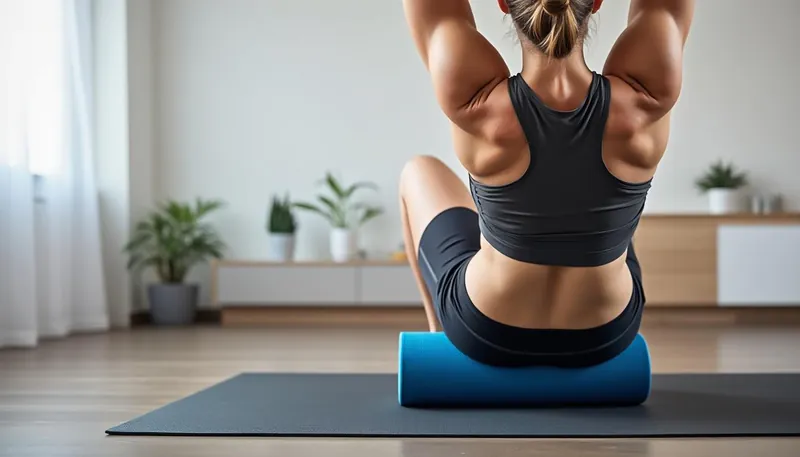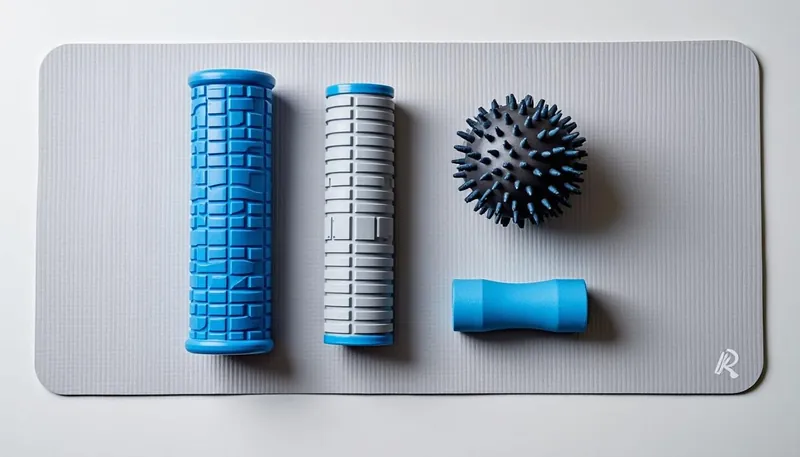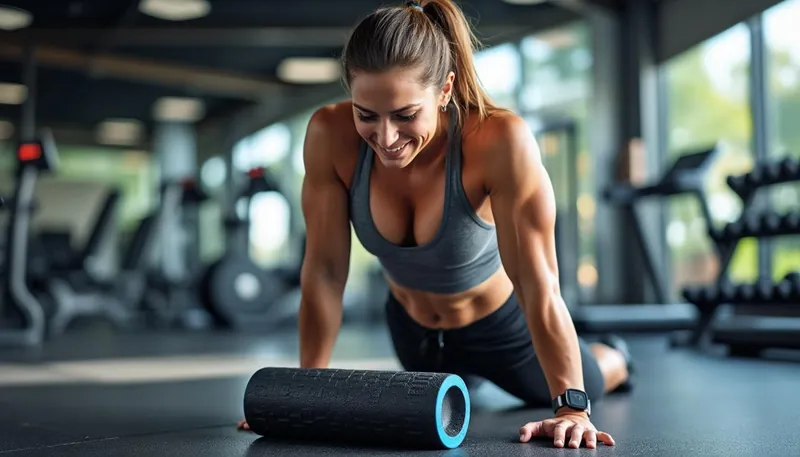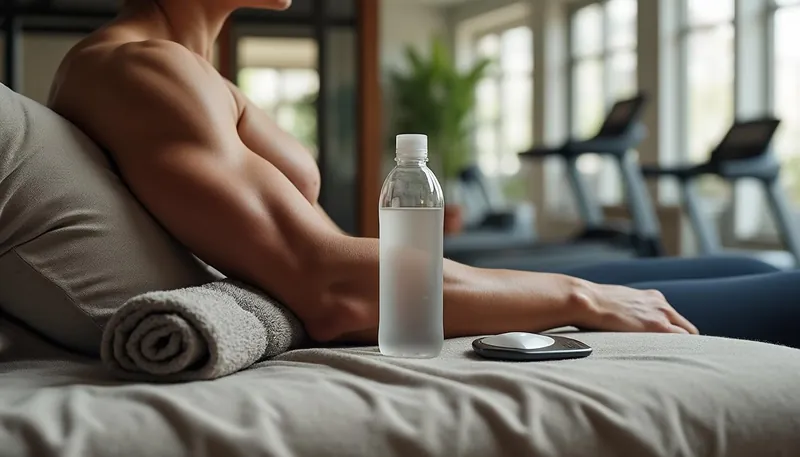Foam rolling has become the go-to recovery method for athletes and fitness enthusiasts alike in recent years. But does it actually work? The age-old question resonates more as we explore the science and anecdotal evidence behind this a favorite in the realm of physical recovery. Ranging from a simple tube of dense foam to more advanced devices like those from TriggerPoint or Hyperice, foam rolling is marketed for its ability to alleviate muscle soreness and enhance mobility. But how much credence can we truly give to these claims? Are the effects merely physiological improvements, or do they straddle the fine line of placebo effects?
The backdrop for our exploration of foam rolling starts at the core of muscle recovery—activating the body’s natural healing processes. As we delve deeper into the various facets of foam rolling, including its similarities with massage techniques and the placebo effect, we’ll uncover the implications for athletes, casual gym-goers, and anyone seeking to improve their physical wellbeing in 2025 and beyond. Let’s dive in!
- 💪 Foam rolling is popular, yet its effectiveness is under scrutiny.
- 🧠 The placebo effect may play a significant role in perceived benefits.
- 🌀 Recent studies compare foam rolling with other recovery methods.
Understanding Foam Rolling: What Is It and How Does It Work?
Foam rolling, also known as self-myofascial release, is a technique that aims to relieve muscle soreness and stiffness by applying pressure to different muscle groups. Consider it your personal massage therapist, albeit with a more do-it-yourself approach. These foam rollers come in various densities and sizes, with brands like Roll Recovery and Vyper offering unique tools designed to cater to different muscle recovery styles. But what’s the underlying science behind it?
The Mechanics of Foam Rolling
The act of foam rolling primarily targets the fascia— the connective tissue surrounding muscles. When a foam roller is applied to tense or sore muscles, the compression forces help in redistributing muscle tension and restoring the fascia to its optimal state. Simply put, it’s akin to kneading dough, loosening stiff areas for improved flexibility.
Here’s a brief list of the key benefits of foam rolling:
- 🩹 Alleviates muscle tightness
- 💨 Increases blood circulation
- 🏃♂️ Improves range of motion
It seems that foam rolling has the potential to enhance muscle performance by teaching the central nervous system to manage muscle tone better. However, the benefits can greatly depend on the approach and technique employed by the individual. This brings us to a pertinent point: how effective is foam rolling compared to other recovery methods?
| Recovery Method | Effectiveness | Notes |
|---|---|---|
| Foam Rolling | Moderately effective | Helps alleviate soreness and stiffness. |
| Massage | Short-term relief | May not lead to structural changes in tissue. |
| Active Recovery | Effective | Incorporates light movements post-workout. |

Exploring the Placebo Effect in Foam Rolling
Ever heard of the placebo effect? It’s a fascinating phenomenon where individuals experience perceived improvements in their wellness after receiving a treatment that lacks active substances. In the case of foam rolling, many swear by its benefits, citing significant reductions in muscle fatigue and soreness. But are these benefits truly physiological, or could they largely stem from the placebo effect?
The Science Behind Placebos
Psychologist Elissa Patterson explains how placebos can stimulate existing healing processes within the body. When a person engages in foam rolling with a strong belief in its benefits, the mind can tap into natural pain-relief pathways, which essentially discussions how our expectations can unfold in physical improvements.
To illustrate this, consider an athlete who regularly practices foam rolling as part of their routine. The next time they hop on their roller, their brain might already be primed for relief, reducing their perception of pain and enhancing recovery. Here’s a list of factors contributing to the placebo effect:
- 🔮 Expectation and belief in treatment efficacy
- 🏠 Familiarity with environments associated with relief (e.g., a gym or massage room)
- 🔄 Repetition of the recovery ritual over time
This highlights the critical relationship between psychological factors and physical recovery. Recognizing that foam rolling may be working one’s mental game as much as it addresses physical concerns helps clarify its role in recovery strategies.
Comparing Foam Rolling Techniques: What Tools Should You Use?
With so many options available in the market, which foam rolling tools provide the most effective results? Devices vary from simple foam rollers to advanced models equipped with vibration technology, such as the Hyperice Vyper or the TheraGun. What do these different tools offer, and how do they stack up against simple foam rollers or a Lacrosse Ball?
Tool Breakdown: Comparing Popular Options
Here’s a breakdown of various foam rolling tools and their unique features:
- 🌀 Grid Foam Roller: Great for deeper muscle penetration.
- 🔋 Hyperice Vyper: Incorporates vibration for enhanced muscle activation.
- ⚽ Lacrosse Ball: Perfect for targeting small, hard-to-reach areas.
- 🐆 Tiger Tail: Offers a portable option for on-the-go users.
These tools can significantly change how you approach recovery, and finding the right one tailored to your needs can optimize your experience. However, it’s also important to note that no tool is a substitute for good technique and proper training.
| Foam Rolling Tool | Best For | Pros |
|---|---|---|
| Grid Foam Roller | Overall body | Versatile and effective for various muscle groups. |
| Vyper | Deep tissue and activation | Boosts metabolic activity via vibration. |
| Lacrosse Ball | Trigger points | Perfect for pinpointing tight spots. |

Integrating Foam Rolling into Your Recovery Routine
Once you understand what foam rolling components experience, the next step is to incorporate it into your training regimen effectively. Timing, technique, and personal preferences all play a role in the overall success of foam rolling as a recovery method.
Best Practices for Foam Rolling
To maximize the benefits of foam rolling, consider the following suggestions:
- 🕒 Roll for at least 30 seconds per muscle group
- 🌊 Stay hydrated before and after your session
- 🧘 Incorporate breathing techniques to enhance relaxation
Moreover, understanding when to roll is essential. Some experts suggest using foam rolling as a warm-up to prep muscles before intense workouts. In contrast, post-workout sessions can help relieve tightness and soreness.
| Foam Rolling Timing | Purpose |
|---|---|
| Pre-Workout | Prepare muscles for activity |
| Post-Workout | Reduce soreness and aid recovery |
Is foam rolling effective for everyone?
Not everyone experiences the same benefits from foam rolling. Individual results may vary based on the specific muscle groups targeted and personal preferences.
How often should I foam roll?
To maximize its benefits, it’s typically recommended to foam roll on a regular basis, especially before workouts or light activity.
Can foam rolling help with injury recovery?
While foam rolling can alleviate muscle tightness, it’s important to consult healthcare professionals for specific injury recovery protocols.
Are there risks associated with foam rolling?
Excessive foam rolling or improper technique can lead to muscle strain or discomfort. It’s important to listen to your body and adjust as needed.
What foam rolling tools are best for beginners?
For beginners, simple and soft foam rollers are recommended to help ease into the practice of foam rolling.


